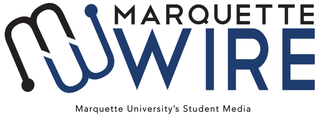
Media studies is a discipline and field of study that deals with the content, history, and effects of various media; in particular, the mass media. Media Studies may draw on traditions from both the social sciences and the humanities, but mostly from its core disciplines of mass communication, communication, communication sciences, and communication studies.

Mass media includes the diverse arrays of media that reach a large audience via mass communication.

In mass communication, digital media is any communication media that operates in conjunction with various encoded machine-readable data formats. Digital content can be created, viewed, distributed, modified, listened to, and preserved on a digital electronic device, including digital data storage media and digital broadcasting. Digital is defined as any data represented by a series of digits, and media refers to methods of broadcasting or communicating this information. Together, digital media refers to mediums of digitized information broadcast through a screen and/or a speaker. This also includes text, audio, video, and graphics that are transmitted over the internet for viewing or listening to on the internet.

The media of Canada is highly autonomous, uncensored, diverse, and very regionalized. Canada has a well-developed media sector, but its cultural output—particularly in English films, television shows, and magazines—is often overshadowed by imports from the United States. As a result, the preservation of a distinctly Canadian culture is supported by federal government programs, laws, and institutions such as the Canadian Broadcasting Corporation (CBC), the National Film Board of Canada (NFB), and the Canadian Radio-television and Telecommunications Commission (CRTC).

The news media or news industry are forms of mass media that focus on delivering news to the general public. These include news agencies, newspapers, news magazines, news channels etc.
Alternative media are media sources that differ from established or dominant types of media in terms of their content, production, or distribution. Sometimes the term independent media is used as a synonym, indicating independence from large media corporations, but generally independent media is used to describe a different meaning around freedom of the press and independence from government control. Alternative media does not refer to a specific format and may be inclusive of print, audio, film/video, online/digital and street art, among others. Some examples include the counter-culture zines of the 1960s, ethnic and indigenous media such as the First People's television network in Canada, and more recently online open publishing journalism sites such as Indymedia.

The mass media in South Africa has a large mass media sector and is one of Africa's major media centres. While South Africa's many broadcasters and publications reflect the diversity of the population as a whole, the most commonly used language is English. However, all ten other official languages are represented to some extent or another. Afrikaans is the second most commonly used language, especially in the publishing sector.
Mass communication is the process of imparting and exchanging information through mass media to large population segments. It utilizes various forms of media as technology has made the dissemination of information more efficient. Primary examples of platforms utilized and examined include journalism and advertising. Mass communication, unlike interpersonal communication and organizational communication, focuses on particular resources transmitting information to numerous receivers. The study of mass communication is chiefly concerned with how the content and information that is being mass communicated persuades or affects the behavior, attitude, opinion, or emotion of people receiving the information.
Mass media in Nepal include radios, televisions, newspapers and the online services.
In media studies, mass communication, media psychology, communication theory, and sociology, media influence and themedia effect are topics relating to mass media and media culture's effects on individuals' or audiences' thoughts, attitudes, and behaviors. Through written, televised, or spoken channels, mass media reach large audiences. Mass media's role in shaping modern culture is a central issue for the study of culture.
Make is an American magazine published since June 2019 by Make: Community LLC which focuses on Do It Yourself (DIY) and/or Do It With Others (DIWO) projects involving computers, electronics, metalworking, robotics, woodworking and other disciplines. The magazine is marketed to people who enjoyed making things and features complex projects which can often be completed with cheap materials, including household items. Make is considered "a central organ of the maker movement".

This is an overview of media in Vancouver, British Columbia.
Media psychology is the branch and specialty field in psychology that focuses on the interaction of human behavior with media and technology. Media psychology is not limited to mass media or media content; it includes all forms of mediated communication and media technology-related behaviors, such as the use, design, impact, and sharing behaviors. This branch is a relatively new field of study because of advancement in technology. It uses various methods of critical analysis and investigation to develop a working model of a user's perception of media experience. These methods are used for society as a whole and on an individual basis. Media psychologists are able to perform activities that include consulting, design, and production in various media like television, video games, films, and news broadcasting. Media psychologists are not considered to be those who are featured in media, rather than those who research, work or contribute to the field.
Old media, or legacy media, are the mass media institutions that dominated prior to the Information Age; particularly print media, film studios, music studios, advertising agencies, radio broadcasting, and television.

Marquette Wire is the official outlet of Marquette University's student media, supported by the university's Diederich College of Communication, which allows students to gain real-world experience in producing mainstream media. Students studying journalism, digital media and other related fields can gain experience through writing, editing, producing and publishing content relating to Marquette and the surrounding Milwaukee community.
In communication, media are the communication outlets or tools used to store and deliver content. The term generally refers to components of the mass media communications industry, such as print media, publishing, the news media, photography, cinema, broadcasting, digital media, and advertising.

Mass media in Kenya includes more than 91 FM stations, more than 64 free to view TV stations, and an unconfirmed number of print newspapers and magazines. Publications mainly use English as their primary language of communication, with some media houses employing Swahili. Vernacular or community-based languages are commonly used in broadcast media; mostly radio.

Ministry of Information and Broadcasting is a ministerial level agency of the Government of India responsible for the formulation and administration of rules, regulations and laws in the areas of information, broadcasting, the press and the Cinema of India.
Television criticism is the act of writing or speaking about television programming to subjectively evaluate its worth, meaning, and other aspects. It is often found in newspapers, television programs, radio broadcasts, Internet and specialist periodicals and books.

The term mass media refers to any means or technology used to communicate a message to large groups of people. Popular forms of mass media include television, the Internet, and newspapers. Mass media are specifically intended to reach larger audiences. The term is often divided into two broad categories: that of electronic mass media and that of print mass media. Electronic mass media require their audiences to interact with electronics in order to receive the message. They attempt to recreate or represent a message through moving pictures and/or sound. Four common examples of electronic media used in Canadian society are television, radio, films, and the Internet. Print mass media, on the other hand, refers to any media that is distributed to audiences in a printed form, on paper. Examples of this include newspapers, printed books, and magazines.








